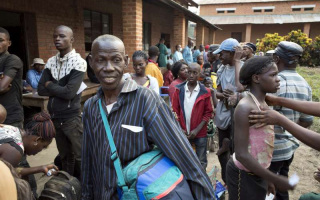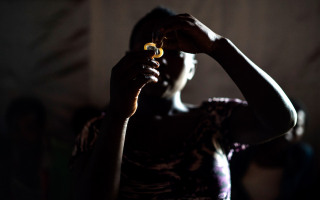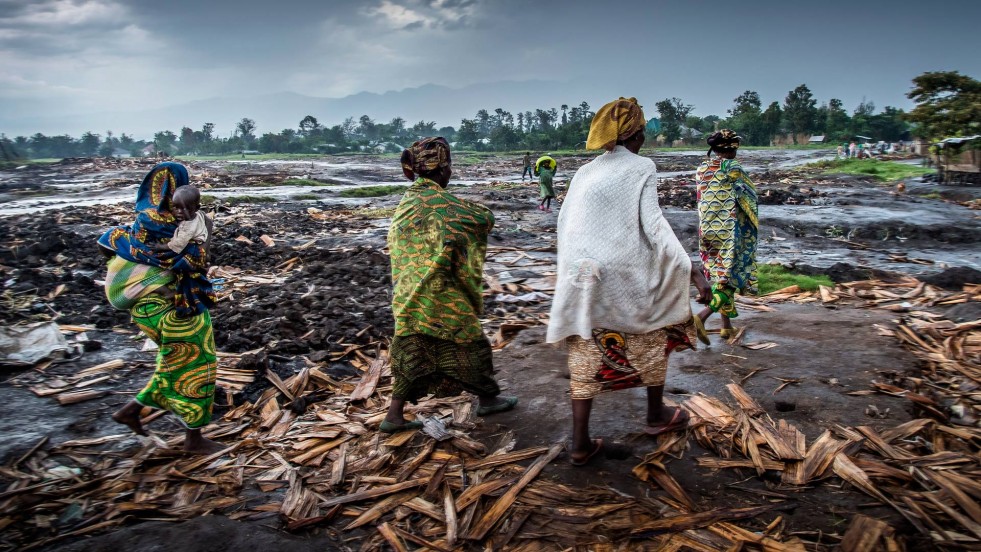
Congolese women return to see what little is left of Kiwanja settlement. © UNHCR / Frederic Noy
Rain pours down on the scorched ruins of what was, until just a few weeks ago, a refuge for thousands of people displaced inside the volatile North Kivu province of the Democratic Republic of the Congo. Dozens of former inhabitants, mainly women and children, gather around us to recount their latest experience of fear and flight.
Among them is a woman I’ll call Célestine, a 48-year-old mother of three. Seeking respite from the rain here in Rutshuru, a 70-kilometre drive north of Goma, she holds a small piece of plastic tarpaulin above her head.
Célestine tells us she lived here at the Kiwanja site for six years—ever since the FDLR, a Rwandan rebel group operating out of eastern Congo, forced her from her home in Nyamitwitwi, across the mountains to the west. “The FDLR were raping women, beating up men,” she says. “People fled, and the village was abandoned.”
A few weeks ago she had to flee again. On 2 December, all 2,300 residents of the Kiwanja settlement in Rutshuru were suddenly told to leave and go home. Within a day, their makeshift shelters were burnt to the ground.
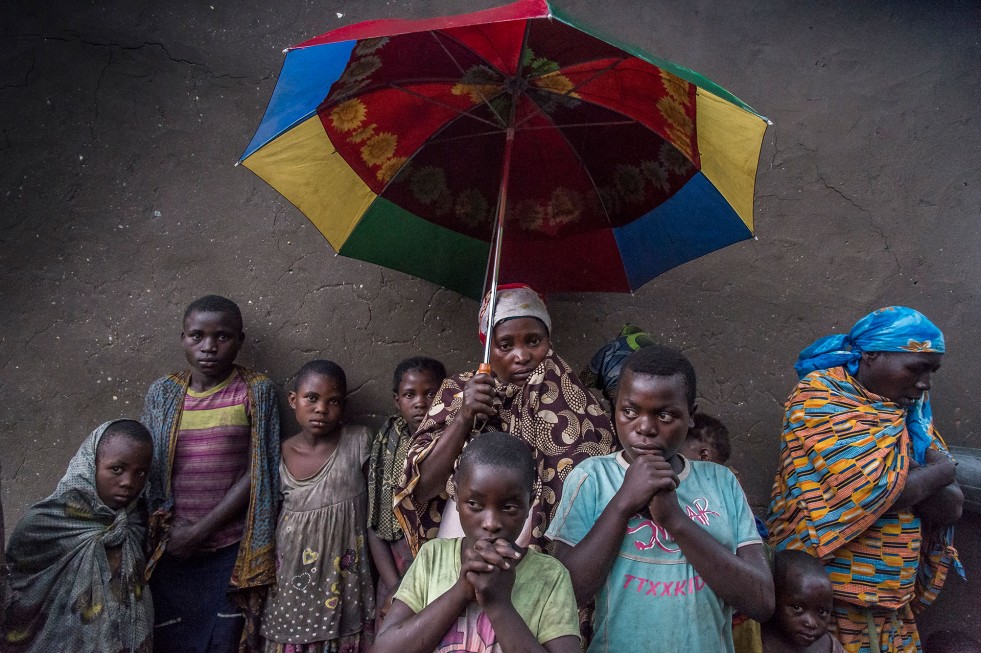
After their shelters in Kiwanja settlement were razed last month, displaced families had to contend with heavy rain. © UNHCR / Frederic Noy
Célestine has no home to go back to. “The FDLR continue to rule the zone,” she explains. “They are still there. My fields are now the FLDR camp. How can I go home? Am I going to ask the rebels to leave my field? It’s impossible.”
She and her husband both suffer from tuberculosis. Now they are sheltering in a nearby family’s courtyard, sleeping on the muddy soil outside with their three children. But they are not alone. Twenty-three other families are camping out in the same courtyard.
“How can I go home? Am I going to ask the rebels to leave my field? It’s impossible.”
Célestine is still shaken by the recent eviction. “We saw policemen and soldiers entering the site,” she recalls. “They told us to leave the site and if we don’t leave they would hurt us. When we saw that there was a threat, we started taking our belongings. We took what we could take. The president of the site told us that… if we stay, we may risk our life.”
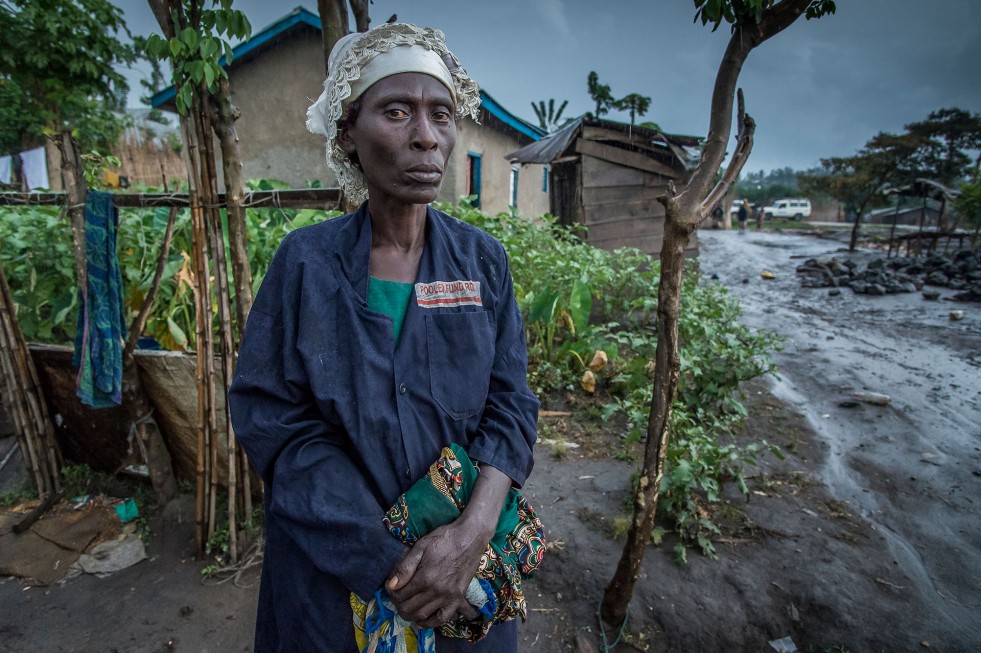
After losing everything again, this woman says she sleeps in the open and relies on the generosity of local residents. © UNHCR / Frederic Noy
Many who were living in the camp lost everything. Some were away, working in the fields or collecting firewood, and their belongings were stolen or destroyed. “The next day, trucks came to take us,” Célestine says. “Some boarded in the trucks. We stayed.”
Like Célestine, many of the people here do not have homes to go back to. And they worry that they would not be safe in their villages.
“We can’t go home because the area is still occupied by armed groups,” says Francine, a 26-year-old single mother to four children. “That’s the reason why we are here.”
Célestine herself found this out the hard way. “At some point I decided to go back home with my daughter,” she tells me. “When we arrived, they raped us. I managed to escape with my daughter and decided that I will never leave Kiwanja again.”
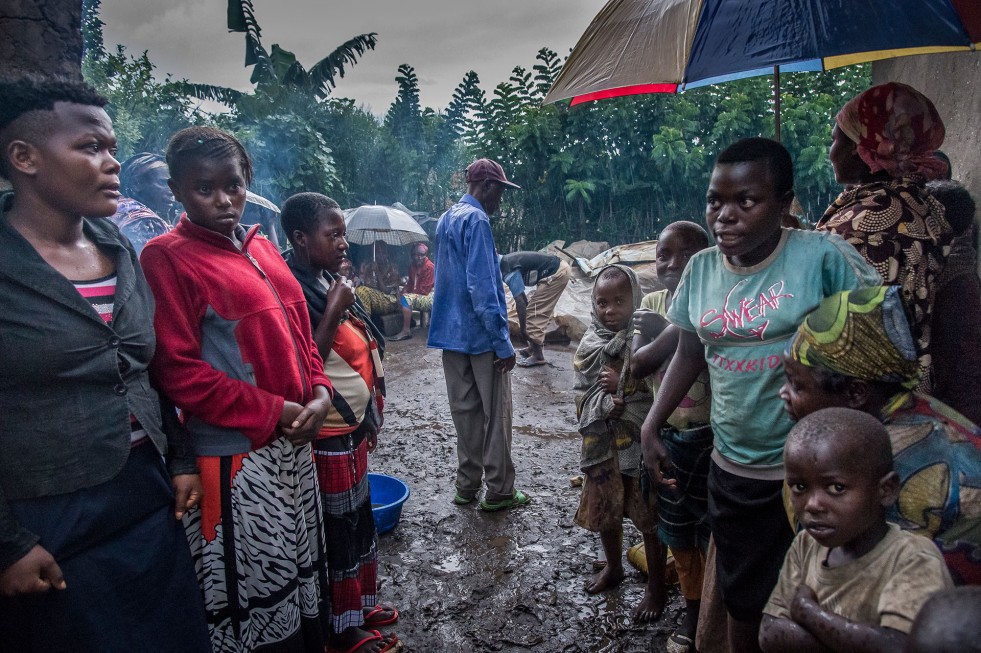
The fire that razed hundreds of shelters was followed by heavy rains, leaving no escape from the mud. © UNHCR / Frederic Noy
Before the Kiwanja site was closed, its residents had been receiving food and other assistance from aid organizations. It was already difficult for people to feed their children and send them to school. Now it is almost impossible.
“Some of us were working in the fields of the local population to pick nzombe and sell them,” says Francine, using a local term for cassava leaves. “Others were going to the FDLR zones to buy charcoal and were coming back. But those were exposed to the risk of being raped.”
Célestine confirms that people here need help. “During the destruction of the site, we lost our cooking utensils, our plastic sheeting and our blankets.”
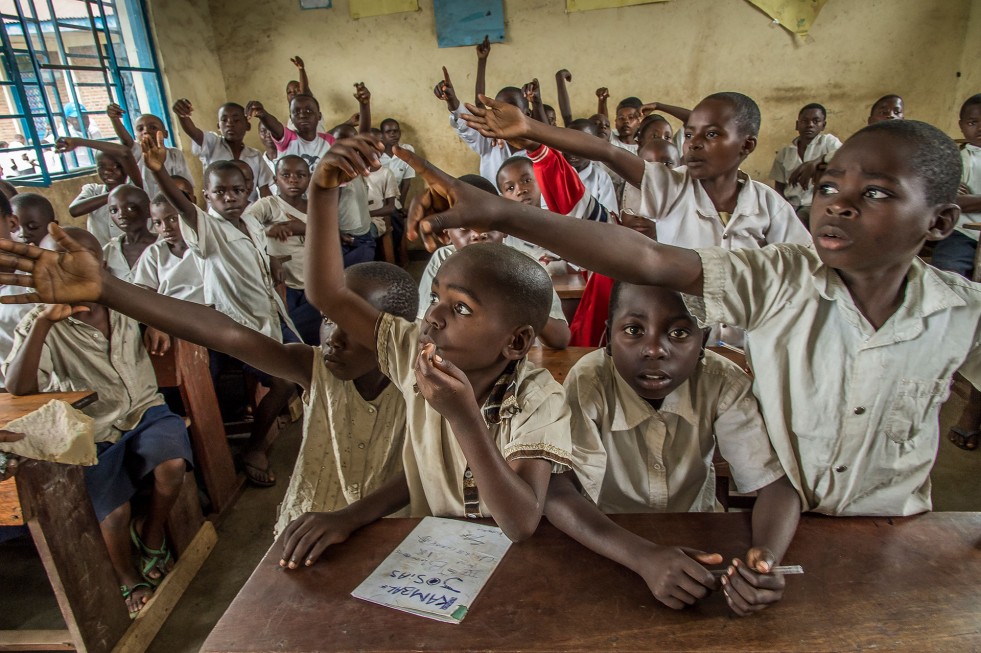
Some parents evicted from the settlement do not want to withdraw their children from the local school in Rutshuru. In this classroom, a third of the students are from displaced families. © UNHCR / Frederic Noy
More than 40,000 internally displaced people (IDPs) have voluntarily left the camps around Goma since the end of 2013, mainly because peace has been restored in the areas to which they are returning. But many others—over 210,000 at last count—are still living in 60 IDP sites spread throughout North Kivu Province.
“We are asking the government to secure our villages so that we can go home,” Célestine says. “We don’t need to stay in a [IDP] site. The government should put a stop to the violence in our villages to allow us to regain access to our fields.”
Tonight, Célestine will sleep outside in the rain again. In her dreams, she is going home.
By: Céline Schmitt
Originally published 22 January, 2015



